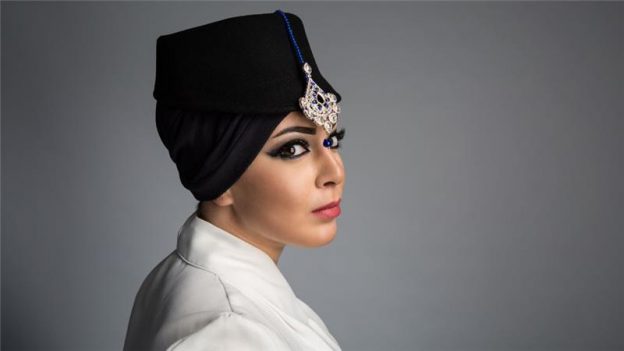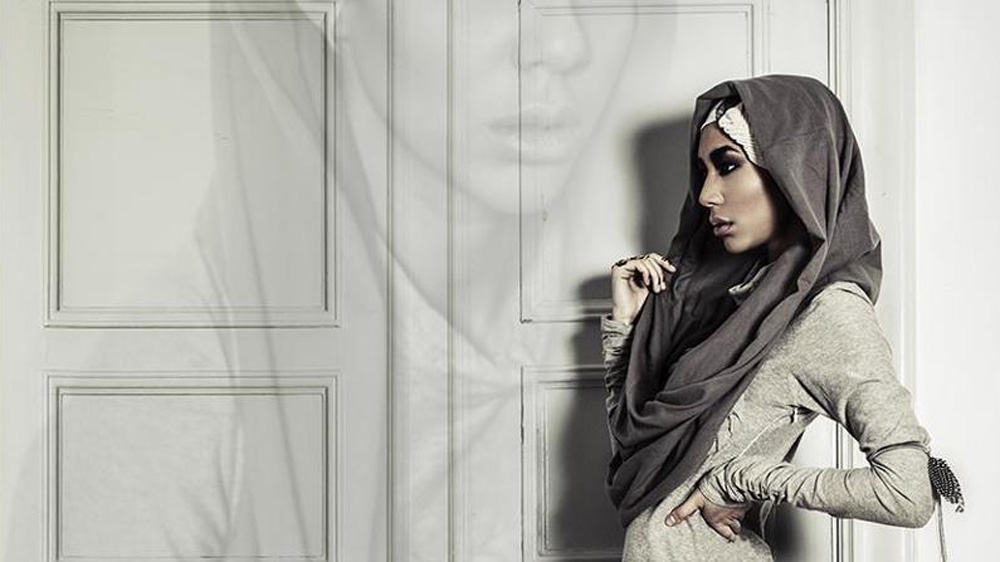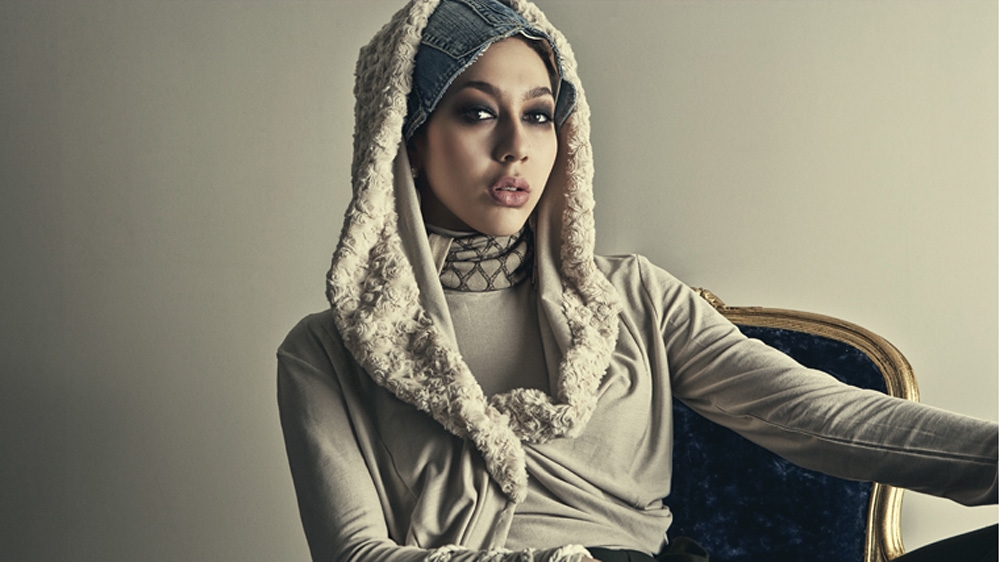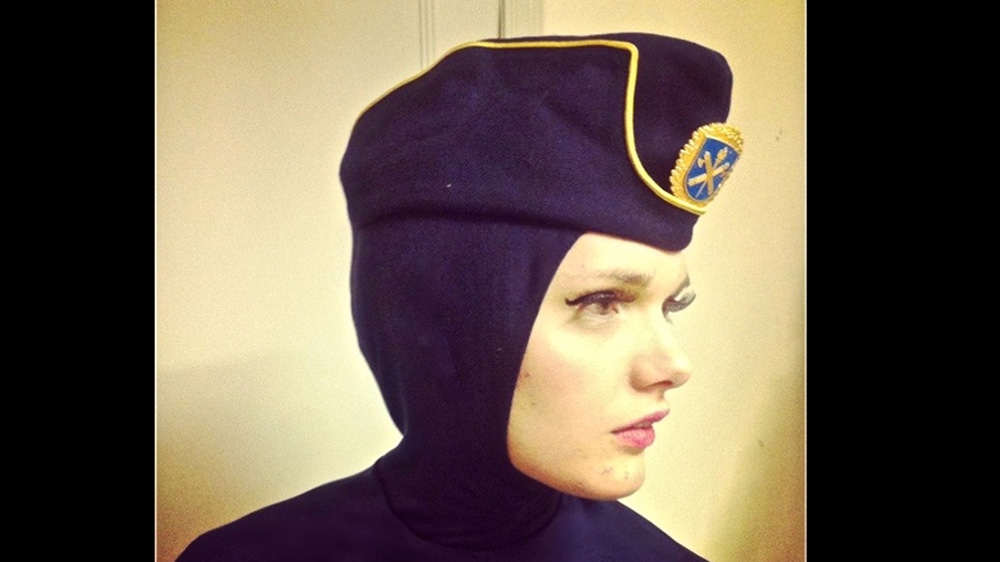
26th July 2024 admin Category :
Swedish fashion designer Iman Aldebe is leading a modest fashion revolution.
Stockholm, Sweden – In the last few weeks the Swedish fashion brand Hennes & Mauritz, known globally as H&M, has made headlines for featuring a Muslim woman in hijab in their 2015 fall collection campaign video.
They are not the only Swedish retailers to have done so. Ahlens department store also featured Muslim women in hijab in their 2015 fall campaign.
Both drew praise. But there was also criticism, with some accusing the retailers of“normalising the hijab and supporting the oppression of women”.
This kind of sentiment is all too familiar to Iman Aldebe, a Muslim designer who was born in Sweden to Jordanian parents.
Many of her designs feature haute couture turbans that are sold in exclusive department stores in Sweden, Paris, New York and Dubai.
The imam’s daughter
But getting here hasn’t been easy. As the daughter of a recently retired imam, Aldebe grew up in a religious Muslim family in Stockholm, where, in the early 1990s, the only place to worship was a mosque in a basement that doubled up as a community centre.
Muslims from all over the country would come to the capital to worship there, to buy religious books and halal food and to learn the Quran. For a few hours at the weekends or during the holidays, the people who gathered there felt the acceptance that came from being around those who shared their beliefs.
“I started wearing hijab when I was six,” explains the 30-year-old designer. “Growing up, I was always monitored. Wearing makeup and anything that differed from [what] the [rest of the Muslim] community [wore] was not acceptable.”
“I felt that I had so much responsibility and a certain role I had to live up to,” she reflects.
But an interest in fashion always bubbled beneath the surface.
“I remember while growing up how I used to dislike the way my mum and her friends had the same uniform, colourless headscarves. They also used to wear the same style of A-line coat – it was the only thing available [in the shops] at the time that was deemed modest,” Aldebe explains.
 |
| Many of Aldebe designs feature haute couture turbans that are sold in exclusive department stores in Sweden, Paris, New York and Dubai [Jimmy Hakansson] |
She began studying fashion design in high school when she was 16-years-old and quickly realised that there was an entrepreneurial side to her passion for crafting clothes. She started creating graduation and wedding outfits that were fashion-forward but still modest.
“I started with small orders for my immediate circle of friends and family,” she says.
Aldebe went to university to study journalism and law, but a year into her studies she decided to take a gap year.
Re-imagining the hijab
That year proved valuable; teaching her much about how the real world of retail worked. But it also gave Aldebe her first taste of anti-hijab discrimination.
She remembers seeing an ad outside a boutique that was looking to recruit a sales person.
| According to a 2014-2015 report by Thomson Reuters, Muslims globally spent $266bn on clothing and footwear in 2013 and that number is expected to rise to $484bn by 2019. |
“When I went inside to query about the position I was told that it had already been taken,” she says.
“I had a feeling they were not genuine so I sent in my friend, who was not wearing hijab. When she asked about the position, they asked her how soon she could start,” she sighs.
There was also the time when she tried to find retail work via the job centre, and was told by the person handling her case that religion doesn’t belong in the workplace.
“That person also told me that it was probably better for me to take off my hijab,” she remembers.
Feeling disappointed but determined, Aldebe returned to university. She graduated with a degree in broadcast journalism and law in 2012.
Eventually she got a part-time job in a boutique – but first she made some adjustments to the way she wore her headscarf.
“I decided to change [the way I wore it], from wrapping it around my face to tying it all at the back like a traditional African head wrap. I went to the interview and I was accepted.”
She recalls how customers would complement her on how “cool” it looked.
 |
| Aldebe Haute Couture turbans are sold in large retail stores in global shopping hubs, and she is hoping to break into the UK market. [Annelie Ellie Akerman] |
“I felt that I could make some changes that wouldn’t compromise my beliefs and would be acceptable both within my religion and within Swedish society,” she says.
In 2006, Aldebe appeared, along with some other Muslim designers, on Sweden’s TV4 morning magazine show to discuss styles of hijab.
“Following that segment, Aftonbladet, a leading Swedish newspaper, reached out to Swedish department stores and asked if they would consider selling headscarves and catering to Muslim fashion,” Aldebe explains.
The answer, they told her, was no.
Aldebe began to think more seriously about the concept of modernising Muslim fashion. She felt certain that these stores would change their opinion once they realised how much of an untapped market Muslim women wear was. She started to set up her “modest” fashion business.
Filling a gap
“It’s interesting to see how some of these stores that refused to sell hijab years ago are now embracing it and capitalising on Muslim fashion,” she says.
And it is a fast-growing market. According to a 2014-2015 report by Thomson Reuters, Muslims globally spent $266bn on clothing and footwear in 2013 and that number is expected to rise to $484bn by 2019.
With millions of potential Muslim consumers worldwide, brands like Mango and DKNY have released lines specifically catering to the month of Ramadan, when Muslims fast from sunrise until sunset and family and social gatherings are more common.
Aldebe recognised this huge gap in the market. By observing her customers, she noticed that many wanted to be able to buy ready-styled headscarves. That was where the idea of the turban came from. She now has a “Happy Turban” line, where every headpiece is unique. It has proven popular among Muslims and non-Muslims alike.
 |
| Aldebe’s “Happy Turban” line, where every headpiece is unique has proven popular among Muslims and non-Muslims alike. [Annelie Ellie Akerman] |
That, however, hasn’t always been well received. “It took years before people would start to accept what I was doing.”
She recalls the criticism she faced when she first started modernising Muslim fashion in 2001. Her critics came from two usually opposed groups – Muslims and Swedish nationalists.
Of the Muslims who were unhappy with her work, she says: “I think some of the Muslims that come to Europe feel ostracised and want to cling as much as possible to every aspect of their culture and religion, otherwise they feel lost.”
But she was able to win over many sceptics. “Some of the people who were very critical of me are now my clients,” she explains.
| I use fashion as a tool to eliminate prejudices against Muslims,” she says. “I want to challenge the image of the oppressed Muslim woman in the West who voluntarily isolates herself from society. |
The turning point for many, Aldebe suggests, came in the wake of the 9/11 attacks in the US.
Hostility towards Muslims grew, and women in hijab felt particularly visible and vulnerable. Some chose to take it off; others looked to people like Aldebe to help them modernise it.
And, for Aldebe, this is about much more than just fashion. She explains how, in the past, many Muslim women in Sweden felt that they could not apply for jobs that imposed regulations regarding dress. The result was that their career options could be limited.
But, in 2007, Aldebe was commissioned to create the hijab hat that now forms part of the official Swedish police uniform for those female Muslim officers who choose to wear it. She is also designing an official military hijab for the Swedish army, as well as for the fire department, pharmacies and hospitals.
“I use fashion as a tool to eliminate prejudices against Muslims,” she says. “I want to challenge the image of the oppressed Muslim woman in the West who voluntarily isolates herself from society.”
“I tried to make a difference in society by coming up with solutions instead of letting society dictate what you can and can’t do.”
Change through fashion
But she hasn’t won everybody over – and her quest to modernise Muslim fashion has provoked some conservative Muslims and right-wing Swedes alike.
“Since 2011, I was threatened by Swedish nationalists who started a hate campaign against me.”
She would receive threats via phone calls, text messages, Facebook, emails and messages posted on her blog.
Among them were things like, “be careful, you might slip and die while you are on your balcony”.
Some internet chat forums would feature conversations on how she didn’t deserve to live.
She says the threats increased when she was asked to design the police hijab hat.
But she remains resolute.
 |
| Aldebe was commissioned to create the hijab hat that now forms part of the official Swedish police uniform [Iman Aldebe] |
“I feel very proud and inspired to see Muslim hijabi women in the Swedish police,” she says. “It’s not easy to be a pioneer in anything, it’s a huge responsibility but we must do it.”
Today, Aldebe Haute Couture turbans are sold in large retail stores in global shopping hubs, and she is hoping to break into the UK market.
“Now women from all backgrounds and religions wear my clothes and turbans. Some collect my turbans,” she says, adding: “It’s interesting to see … how it went from being seen as an object of oppression to a desired fashion item.”
Aldebe acknowledges that many Muslim women who wear hijab have made it in the fashion industry and other occupations without having to alter how they wear it. But, she says, “everyone has to go through their own battle and do things their own way”.
“I could not wait for another 100 years until things changed in Sweden. I had to make some changes and come up with solutions that work for me,” she adds.
“I wanted to wear clothes that felt feminine, colourful and eco-friendly, so I created them,” she says, speaking about her desire for styles that represented her as a young European Muslim.
“I realised very early on that it would take a long time to solve problems and come up with solutions via political means [in order] to allow more Muslim women into the workforce,” she reflects. “I felt that via fashion we can solve many issues and become more accepted in society.”
“Fashion is art and art is positive and can dispel the prejudiced [notion that Muslim] women are oppressed. I want to continue to create clothes that will create opportunities and change for people.”
Source: Al Jazeera







